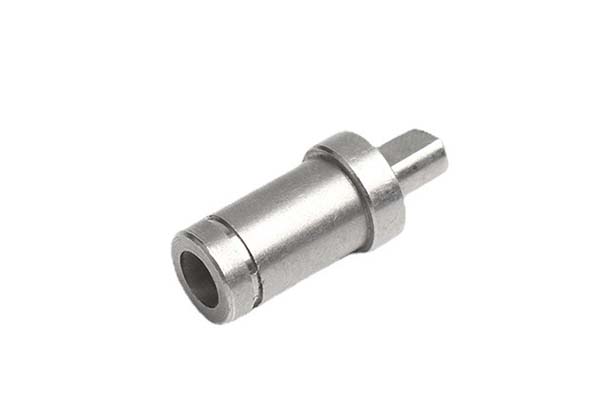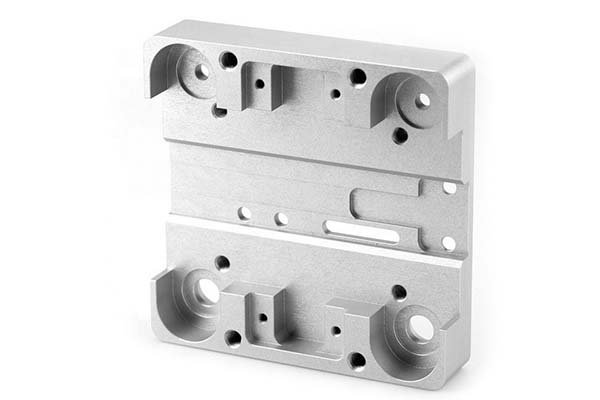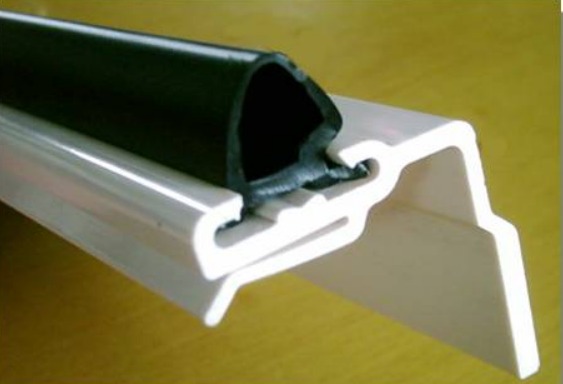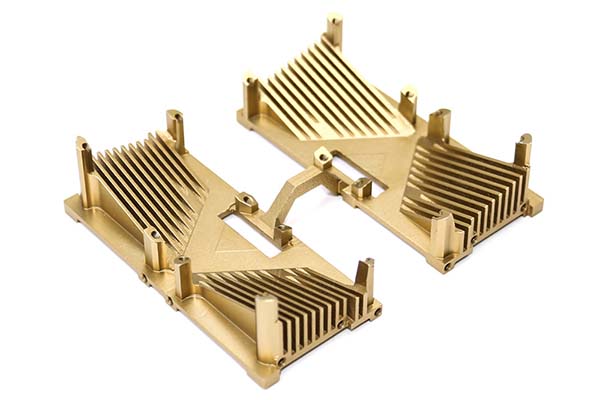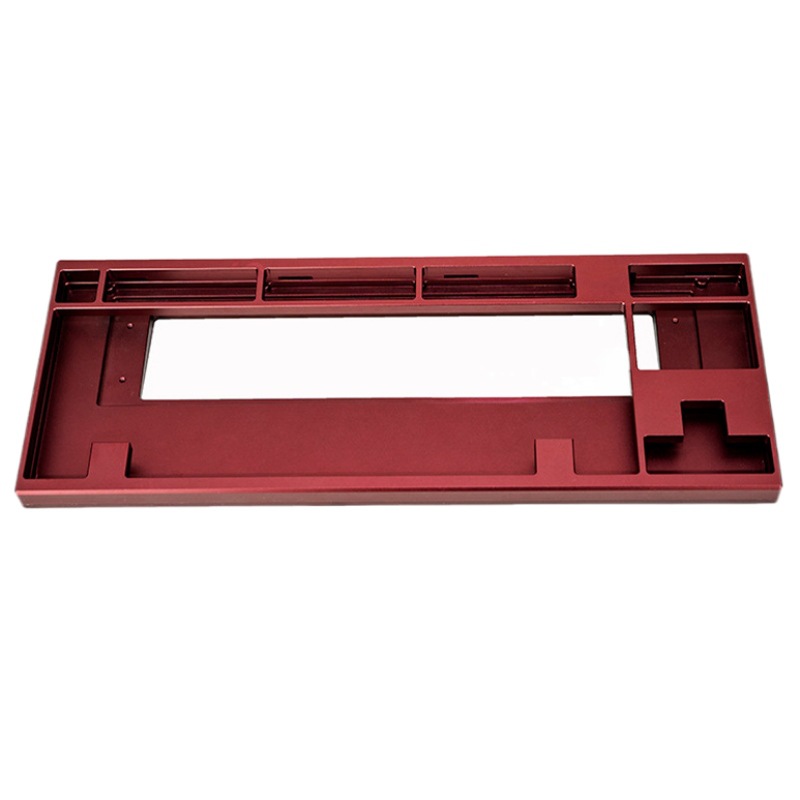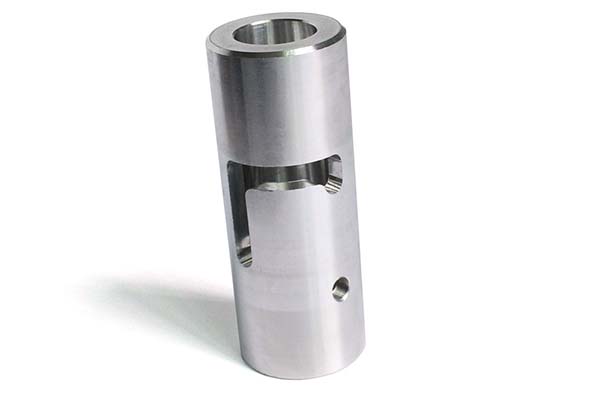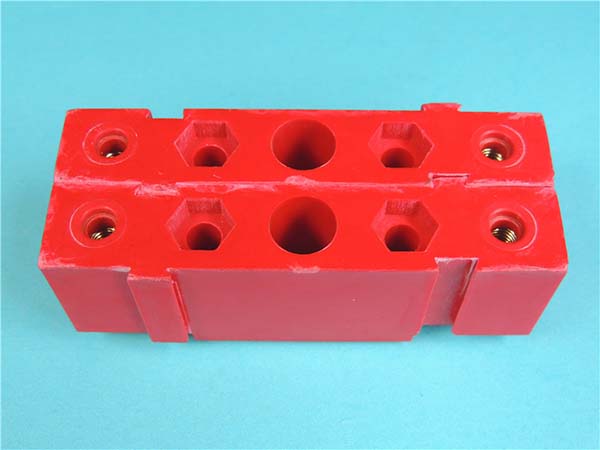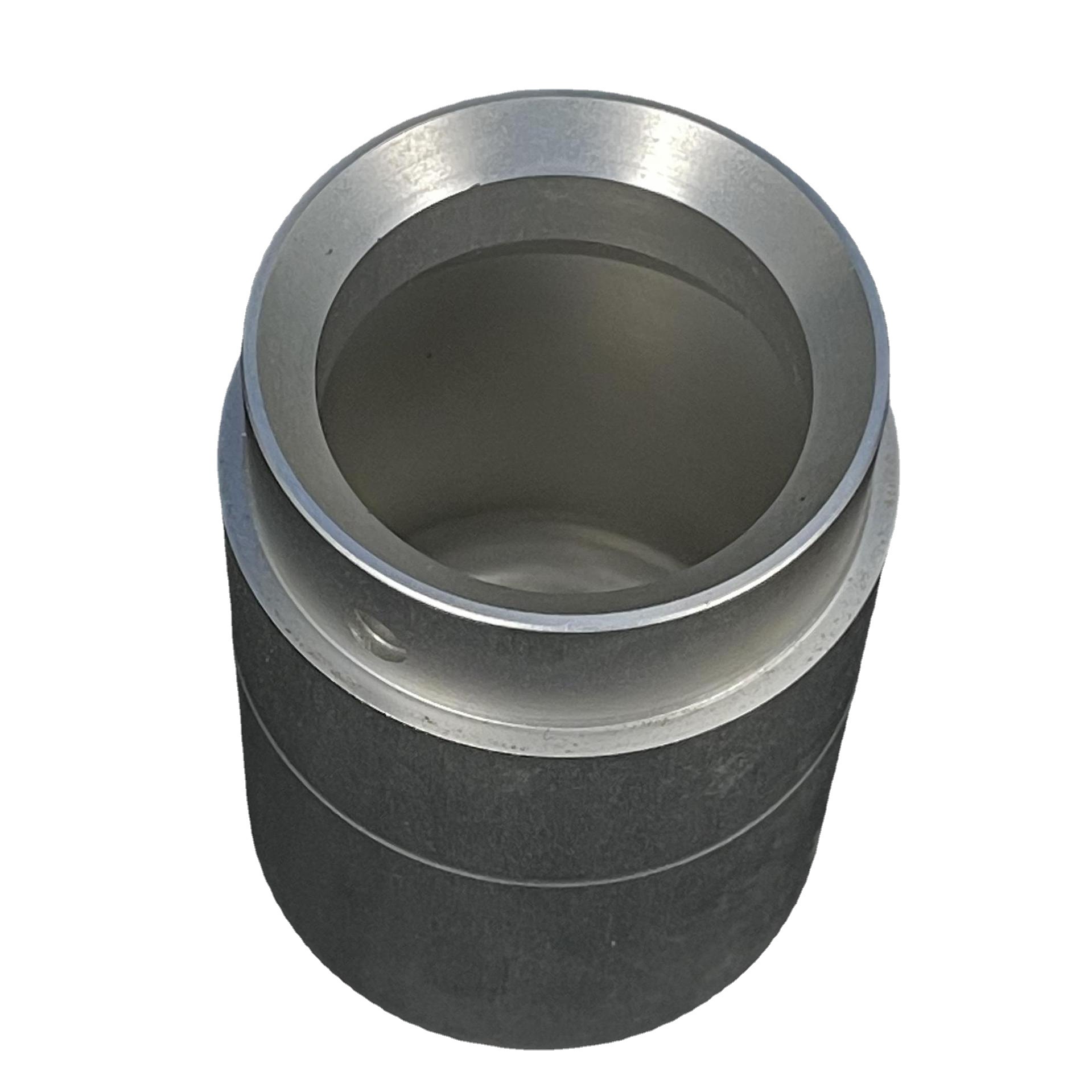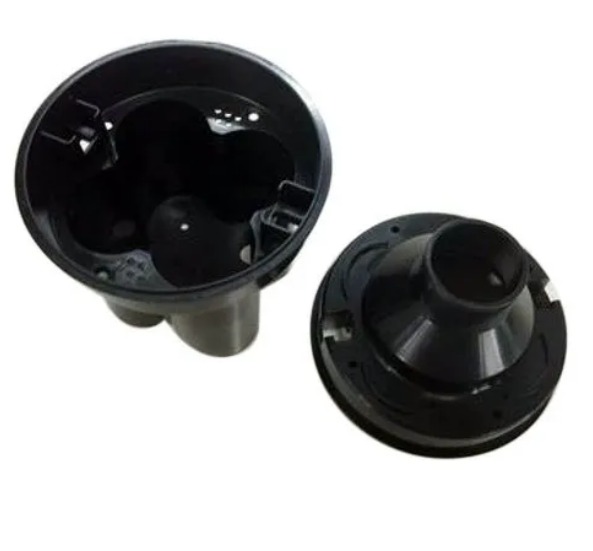Manufacturers needing a blend of high strength, corrosion resistance, and machinability often choose 15-5PH stainless steel. As a precipitation-hardening (PH) stainless steel, it gains exceptional strength through heat treatment, but machining it comes with unique hurdles. Its work hardening tendency, boosted by copper and niobium content, leads to quick tool wear and higher cutting forces. Also, its magnetic properties and sensitivity to heat treatment timing require strict process control. Knowing how it differs from other PH grades (like 17-4PH) or austenitic steels is key to avoiding performance issues. This guide tackles these problems, offering strategies to optimize CNC machining 15-5PH for efficiency, quality, and reliability in high-stress uses.
Material Overview of 15-5PH
15-5PH stainless steel is a precipitation-hardening alloy prized for its strength and versatility:
- Mechanical properties: Tensile strength ranges from 965 MPa (annealed) to 1310 MPa (heat-treated), with yield strength up to 1170 MPa. Hardness reaches 38-42 HRC after aging, balancing strength and ductility.
- Corrosion resistance: Good in mild environments and industrial chemicals, thanks to 14-15% chromium content and 3-5% nickel. It performs similarly to SS304 but is less resistant than SS316 in harsh conditions.
- High strength: Achieved via precipitation hardening, where copper and niobium precipitates form during heat treatment, avoiding the need for quenching and ensuring dimensional stability.
- Work hardening: Noticeable due to its alloy makeup, with cold working increasing hardness by 4-8 HRC locally, requiring sharp tools and controlled cutting.
- Chemical composition: 14-15% chromium, 3-5% nickel, 2.5-4.5% copper, 0.15-0.45% niobium, and trace elements. The copper and niobium content drives its strengthening mechanism.
- Magnetic properties: Moderately magnetic in all states, unlike austenitic steels, useful for applications needing magnetic response.
- Hardenability: Reaches full strength through solution annealing (1040°C) followed by aging (480°C), with no quenching needed, reducing distortion versus martensitic grades.
These traits make 15-5PH stainless steel ideal for high-stress parts in aerospace, medical, and industrial fields.
CNC Machining Processes for 15-5PH
Core Machining Operations
CNC machining 15-5PH is usually done in the annealed state (25-30 HRC) to reduce work hardening, with heat treatment after machining:
- CNC milling: Great for aerospace brackets and medical parts. Low cutting speeds and light depths of cut minimize work hardening, while climb milling reduces tool contact with hardened areas.
- CNC turning: Suitable for shafts and valves, with slow feeds to control heat and prevent early work hardening.
- CNC drilling and CNC boring: Challenging due to high strength; sharp tools and peck drilling aid chip removal and prevent binding.
- Machining centers and multi-axis machining: Boost efficiency for complex parts like turbine components, ensuring consistency before heat treatment (which causes little distortion).
- Laser cutting: Useful for thin sheets (≤5 mm) in the annealed state, but CNC machining is better for tight-tolerance features (±0.01 mm).
Optimal Cutting Parameters
| Operation | Cutting Speed (m/min) | Feed Rate (mm/rev) | Depth of Cut (mm) |
| CNC milling (carbide) | 70-130 | 0.09-0.16 | 0.6-2.2 |
| CNC turning (carbide) | 90-160 | 0.11-0.21 | 1.2-3.2 |
| CNC drilling (carbide) | 60-110 | 0.07-0.13 | 0.6-2.2 |
These parameters balance material removal and work hardening control. Cutting speeds are 5-10% higher than 17-4PH due to 15-5PH’s better machinability.
Tool Selection and Tooling for 15-5PH
Choosing the Right Tools
Tool selection for CNC machining 15-5PH focuses on wear resistance and reducing work hardening:
- Cutting tools: Carbide tools are essential; fine-grain carbide (WC-Co with 6-8% Co) offers the best mix of toughness and wear resistance. High-speed steel tools work for low-volume, slow applications.
- Tool coatings: TiAlN coatings extend tool life by 40-60% vs. uncoated carbide, with good heat resistance to handle friction-induced heat.
- Tool geometry: Positive rake angles (6-10°) lower cutting forces, while sharp edges for cutting reduce work hardening. Thick inserts (≥3 mm) resist chipping under high loads.
- Tool holders: Rigid, shrink-fit holders minimize tool deflection, crucial as 15-5PH’s high strength can cause deflection, increasing work hardening.
- Coolant delivery systems: High-pressure coolant (60-120 bar) flushes chips and reduces heat, preventing tool overheating and built-up edge.
Chip Control Strategies
Poor chip control worsens work hardening and tool wear in 15-5PH. Effective strategies:
- Use tools with aggressive chip breakers for high-strength alloys, especially in turning.
- Peck drill with short retracts to clear chips, avoiding re-cutting and work hardening in deep holes.
- Adjust feeds to get short, fragmented chips, preventing long ones that wrap around tools and cause heat.
Surface Finish and Quality Control
Achieving Desired Surface Characteristics
15-5PH’s surface finish impacts fatigue resistance and corrosion performance, as rough surfaces create stress points:
- Surface roughness: Achievable Ra values are 0.8 μm (finish machining) to 3.2 μm (roughing) in annealed state. After heat treatment, grinding can reach Ra ≤ 0.4 μm for critical surfaces.
- Surface finish requirements: Aerospace parts often need Ra ≤ 0.8 μm for fatigue resistance, while industrial components may accept Ra ≤ 1.6 μm.
- Finishing processes: Polishing enhances corrosion resistance by reducing defects, and electrochemical finishing improves surface smoothness for medical tools.
Quality Control Measures
- Inspection methods: Coordinate Measuring Machines (CMM) check dimensional accuracy before heat treatment, as aging causes minimal distortion (≤0.02 mm/m). Hardness testing (Rockwell C) ensures heat-treated parts meet specs.
- Quality control standards: Following ASTM A564 and ISO 9001 ensures consistent material and machining quality. Aerospace uses may require NADCAP certification.
- Surface defects: Tool marks and burrs can cut fatigue strength by 10-15%. Electrochemical finishing removes these, boosting performance and appearance.
Heat Treatment and Post-Machining Processes
Heat Treatment for 15-5PH
Heat treatment unlocks 15-5PH’s full strength via a two-step process:
- Solution annealing: Heating to 1040°C, then cooling quickly (air/water) to form a supersaturated solution, softening it to 25-30 HRC for machining.
- Aging: Heating to 480°C for 1-4 hours to form copper-niobium precipitates, increasing strength and hardness. Lower temps (450°C) maximize strength; higher (510°C) improve toughness.
- Stress relief annealing: Optional heating to 315°C before aging reduces machining stresses, minimizing distortion in complex parts.
Post-Machining Processes
- Post-machining cleaning: Ultrasonic cleaning removes coolant and chips, preventing contamination that could hinder precipitation during aging.
- Passivation: A nitric acid treatment restores the chromium oxide layer, critical for parts in moisture or chemicals.
- Surface hardening: Shot peening adds surface compressive stress, improving fatigue life by 20-40% in high-stress uses like aerospace fasteners.
Applications of 15-5PH Machined Parts
15-5PH stainless steel’s strength and corrosion resistance suit high-stress environments:
- Aerospace components: Aircraft fittings, gears, and structural parts handle high loads and temperature changes.
- Medical devices: Surgical tools and implants offer biocompatibility, strength, and easy sterilization.
- Industrial machinery: High-pressure valves and pumps resist fatigue in continuous use.
- Chemical processing equipment: Fittings and mixers combine strength with corrosion resistance to mild chemicals.
- Automotive parts: Racing components and high-performance gears withstand extreme stress.
In aerospace fittings, 15-5PH outperforms 17-4PH in machinability while offering comparable strength, lowering production costs.
Technical Specifications and Standards
Following standards ensures 15-5PH parts meet performance needs:
- ASTM standards: ASTM A564 (bars) and A637 (sheet/plate) define composition and properties like hardness.
- ISO standards: ISO 15510 covers precipitation-hardening steels, including 15-5PH.
- Machining tolerances: Annealed state tolerances are ±0.01 mm (small parts) and ±0.05 mm (large). Aging causes minimal changes.
- Quality certifications: AS9100 (aerospace) and ISO 13485 (medical) ensure suitability for regulated fields.
Challenges and Solutions in Machining 15-5PH
Overcoming Key Challenges
CNC machining 15-5PH has challenges, but solutions yield good results:
- Work hardening: A major issue, with hardness up 4-8 HRC in re-cut areas. Use sharp TiAlN-coated carbide tools, high coolant pressure (80 bar), and light cuts to reduce contact time.
- High cutting forces: 20-30% higher than SS304 due to strength. Rigid machines with high torque (≥30 Nm) minimize deflection and ensure accuracy.
- Tool wear: Fast wear from forces and friction. TiAlN-coated carbide lasts 40-60% longer than uncoated tools; ceramic tools help in finishing.
- Heat generation: Friction heat softens tools and speeds work hardening. Intermittent cutting and high-pressure coolant (100 bar) dissipate heat, preserving tool integrity.
- Vibration: Causes poor finishes. Heavy-duty fixturing and balanced holders reduce vibration for stable cutting.
Cost and Efficiency Considerations
Balancing Performance and Cost
CNC machining 15-5PH costs more than austenitic steels, but smart choices boost efficiency:
- Machining cost: 30-50% higher than SS304 due to slower speeds, tool wear, and heat treatment. Justified by 2x higher strength, cutting part weight and material use.
- Tool cost: TiAlN-coated carbide costs 2x more than uncoated but cuts replacements by 40-60%, lowering total tool expenses.
- Production rate: 15-25 parts/hour for small components, 70-80% of SS304’s rate but needed for high strength.
- Efficiency improvements: High-speed machining centers with rigid frames cut cycle times by 10-15%. Batch heat treating lowers per-part costs.
Comparison with Other Materials
How 15-5PH compares to similar materials:
| Material | Tensile Strength (MPa) | Hardness (HRC) | Machinability (Relative) | Corrosion Resistance | Cost (Relative) |
| 15-5PH | 965-1310 | 25-42 | Good (75%) | Good | High |
| 17-4PH | 1030-1380 | 28-44 | Fair (70%) | Good | High |
| SS304 | 515 | 18-22 | Very Good (90%) | Good | Medium |
| Titanium Ti-6Al-4V | 900-1100 | 30-35 | Poor (50%) | Excellent | Very High |
- 15-5PH vs. 17-4PH: 15-5PH is easier to machine (5-10% faster) with similar strength, better for high-volume parts. 17-4PH has slightly higher corrosion resistance.
- 15-5PH vs. SS304: 15-5PH is stronger (2x tensile strength) but harder to machine and costlier, better for high-stress uses.
- 15-5PH vs. Titanium: 15-5PH is cheaper and easier to machine, with comparable strength, a cost-effective alternative for non-extreme environments.
Yigu Technology’s Perspective
At Yigu Technology, we specialize in CNC machining 15-5PH for aerospace and medical clients. Our data shows TiAlN-coated carbide tools with 80-bar coolant cut tool wear by 50% vs. standard setups. We recommend machining annealed (25-30 HRC) then aging at 480°C for strength-toughness balance. For aerospace parts, we do 100% CMM checks pre-aging and hardness tests post-aging to meet ASTM A564. Our certified heat treatment ensures consistent strength, making 15-5PH parts reliable for critical uses.
FAQ
- What makes 15-5PH good for aerospace?
It offers high strength (up to 1310 MPa) with good machinability and corrosion resistance, handling high loads and temperature changes in aircraft parts.
- How does 15-5PH’s machinability compare to 17-4PH?
15-5PH is easier to machine, with lower work hardening and cutting forces, allowing 5-10% faster speeds and longer tool life, reducing production costs.
- Can 15-5PH be machined after heat treatment?
It’s possible but hard due to high hardness (38-42 HRC). Machining annealed then heat treating is better, as aging causes little distortion, saving time and cost.
